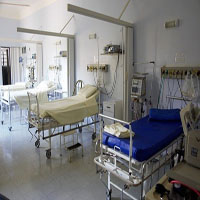 Smart Citations
Smart CitationsSee how this article has been cited at scite.ai
scite shows how a scientific paper has been cited by providing the context of the citation, a classification describing whether it supports, mentions, or contrasts the cited claim, and a label indicating in which section the citation was made.
Physiological deterioration in the Emergency Department: The SNAP40-ED study
Continuous novel ambulatory monitoring may detect deterioration in Emergency Department (ED) patients more rapidly, prompting treatment and preventing adverse events. Single-centre, open-label, prospective, observational cohort study recruiting high/medium acuity (Manchester triage category 2 and 3) participants, aged over 16 years, presenting to ED. Participants were fitted with a novel wearable monitoring device alongside standard clinical care (wired monitoring and/or manual clinical staff vital sign recording) and observed for up to 4 hours in the ED. Primary outcome was time to detection of deterioration. Two-hundred and fifty (250) patients were enrolled. In 82 patients (32.8%) with standard monitoring (wired monitoring and/or manual clinical staff vital sign recording), deterioration in at least one vital sign was noted during their four-hour ED stay. Overall, the novel device detected deterioration a median of 34 minutes earlier than wired monitoring (Q1, Q3 67,194; n=73, mean difference 39.48, p<0.0001). The novel device detected deterioration a median of 24 minutes (Q1, Q3 2,43; n=42) earlier than wired monitoring and 65 minutes (Q1, Q3 28,114; n=31) earlier than manual vital signs. Deterioration in physiology was common in ED patients. ED staff spent a significant amount of time performing observations and responding to alarms, with many not escalated. The novel device detected deterioration significantly earlier than standard care.
How to Cite
PAGEPress has chosen to apply the Creative Commons Attribution NonCommercial 4.0 International License (CC BY-NC 4.0) to all manuscripts to be published.

 https://doi.org/10.4081/ecj.2021.9711
https://doi.org/10.4081/ecj.2021.9711





